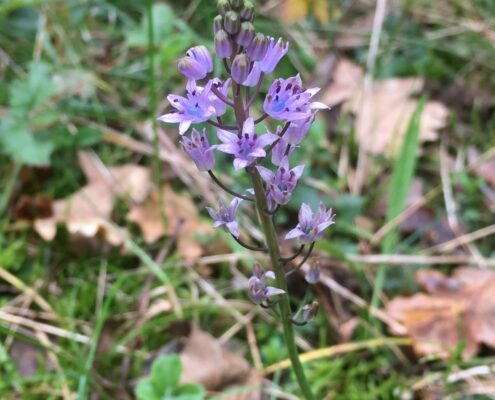 https://greenmarked.it/wp-content/uploads/2024/07/Bleachedcoral.jpg
768
1024
Paula Ruiz del Coro
https://greenmarked.it/wp-content/uploads/2022/01/LOGO-GREENMARKED-SITO-600x600.png
Paula Ruiz del Coro2024-07-01 22:02:332024-07-01 23:12:42The High Seas Treaty: Protecting Oceans’ Biodiversity
https://greenmarked.it/wp-content/uploads/2024/07/Bleachedcoral.jpg
768
1024
Paula Ruiz del Coro
https://greenmarked.it/wp-content/uploads/2022/01/LOGO-GREENMARKED-SITO-600x600.png
Paula Ruiz del Coro2024-07-01 22:02:332024-07-01 23:12:42The High Seas Treaty: Protecting Oceans’ BiodiversityOctober 27, 2023

Our elders knew well how to manage Mother Nature’s resources in the mountain and valley context of our Alps, even in response to climatic events now considered extreme, such as droughts and floods. The historical management of water resources in the mountains enabled prevention and hydrogeological safety [1]. All good and functional. Yes, until we move out of the mountains and into the city.
Water management in the urban context has always concerned authorities and citizens much more than in rural areas, or at least in different terms. Just think of the advent of sewage systems (for clean water and wastewater), water storage systems, stormwater drainage, and everything else that contributes technically to the management of the water element. And so, as is the case in the mountains, water in the city must be managed so that it is available in times of need and does not cause damage when there is too much of it.
However, the limiting factors in the city are, unlike in the mountains, primarily related to the waterproofing of the soil, which, as such, no longer allows water to be absorbed into the soil. And if already in a mountainous terrain devoid of vegetation the absorption and infiltration into the soil of precipitation is reduced due to the lack of trees, imagine what can happen if this terrain is also covered with concrete.
To avoid such drastic waterproofing and, therefore, an increased risk of surface water runoff with all the consequences of that, in engineering and design terms, for works related to soil waterproofing it is mandatory to ensure the so-called “hydraulic invariance” [2] i.e., the principle that the drainage capacity of an area must remain unchanged by changes in land use. In a nutshell: if it rains, the water that falls must be disposed of (naturally or artificially) on par with whether away is a forest or a parking lot.
All this translates into a series of technical and design arrangements of interest to our urban areas, aimed at ensuring not only safety against extreme rainfall events but also benefits for both governments and citizens.

Fig. 1: Construction of a rain garden in Portland. Author: Pete Wright. Copyright: Creative Commons Attribution-NonCommercial-ShareAlike 3.0 Unported (CC BY-NC-SA 3.0)
A practical example are the so-called “rain gardens”, in their various forms [3]. These gardens are designed to absorb in both lean and flood times an important share of rainfall, preventing it from entering the sewer system (which is often undersized against the rapid and intense rainfall in recent years) and thus preventing its collapse.
The special layering of the gardens (sand, compost, soil), to which are added the plants present suitable for periodically flooded or wet soils, promotes infiltration and, at the same time, ensures phytodepuration to release water directly into the ground or, gradually, to the sewer system.
In addition, consider how such gardens can be realized both for large areas, serving the functions of real reservoirs, and for little areas around urban infrastructure such as parking lots, and forecourts parking areas. Replacing a classic concrete or even shrubbery-lined traffic island divider bed with a small drainage garden can ensure drainage for most rain events of not excessive intensity for the surrounding area.
All this, moreover, greatly benefits municipal governments, which are always caught between maintenance needs and limited budgets. The presence of low-maintenance shrubby and herbaceous elements, such as those found in rain gardens, ensures economy and functionality.
Similarly, the judicious design of new urban greenery must focus on native plant elements that are truly able to be multifunctional and resilient to the fluctuating effects of climate. This translates into planting trees that can withstand drought and high maximum temperatures but at the same time tolerate sporadic but intense rainfall; replacing greened turf and roadside slopes with areas planted with low-maintenance, hardy shrubs; and greening any other suitable spaces. In short, green multifunctionality serves citizens.
This article is part of the project “PILLOLE D’ACQUA PIANA: seminari itineranti, blog e podcast per una gestione sostenibile delle risorse idriche in Piana Rotaliana” carried out by ECONTROVERTIA APS and supported by Fondazione Caritro (Prot. no. U445.2023/SG.386 of April 23, 2023).

Related articles:
References:
[1] M. Gecchelin, “Blue Water, Clear Water… Mountain Water,” GreenMarked Blog, 05/10/2023. https://greenmarked.it/blue-water-clear-water-mountain-water/
[2] REGIONE DEL VENETO, “L. 3 agosto 1998, n. 267 – Nuove indicazioni per la formazione degli strumenti urbanistici. Modifica delle delibere n. 1322/2006 e n. 1841/2007 in attuazione della sentenza del Consiglio di Stato n. 304 del 3 aprile 2009,” BUR, 03/11/2009.
[3] J. Bąk and M. Barjenbruch, “Benefits, Inconveniences, and Facilities of the Application of Rain Gardens in Urban Spaces from the Perspective of Climate Change—A Review,” Water, vol. 14.7, p. 1153, 2022.
Cover image and preview image: Green engineering techniques can prevent sewer system collapses and implement phyto-depuration. Photo by Kyle Glenn su Unsplash.










